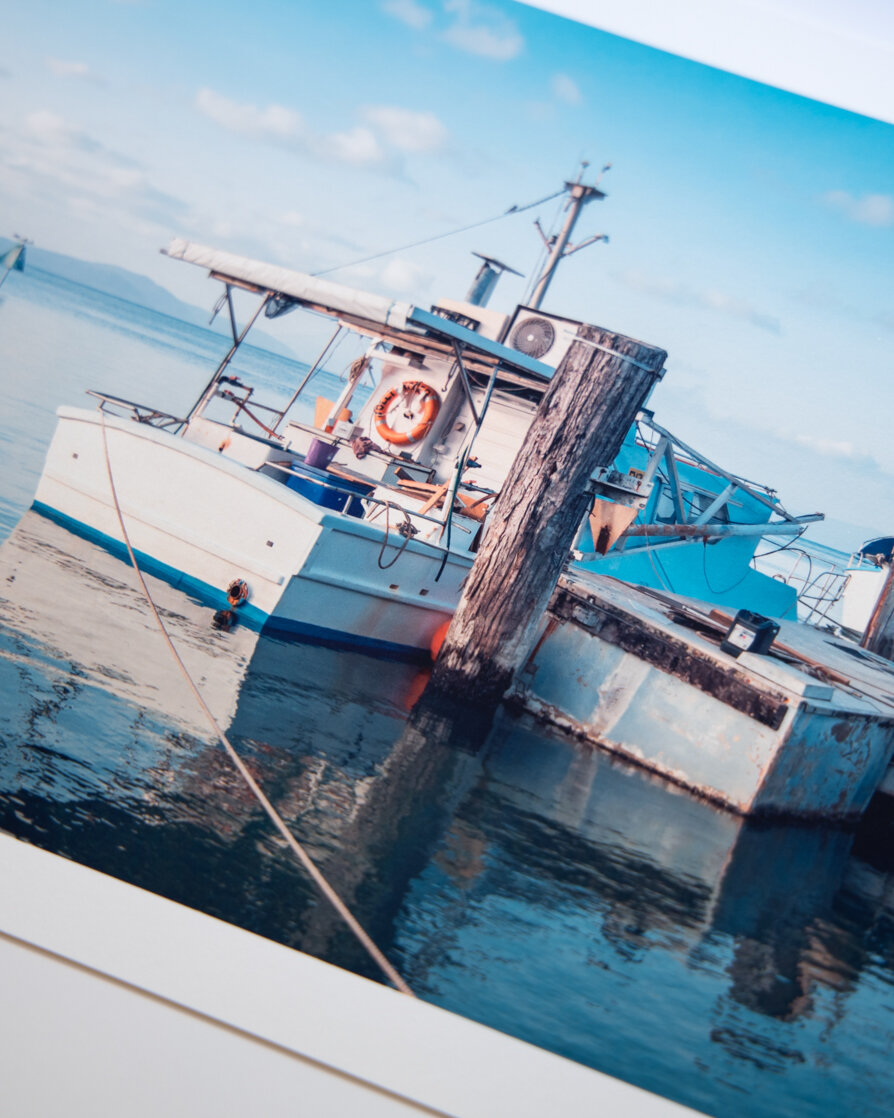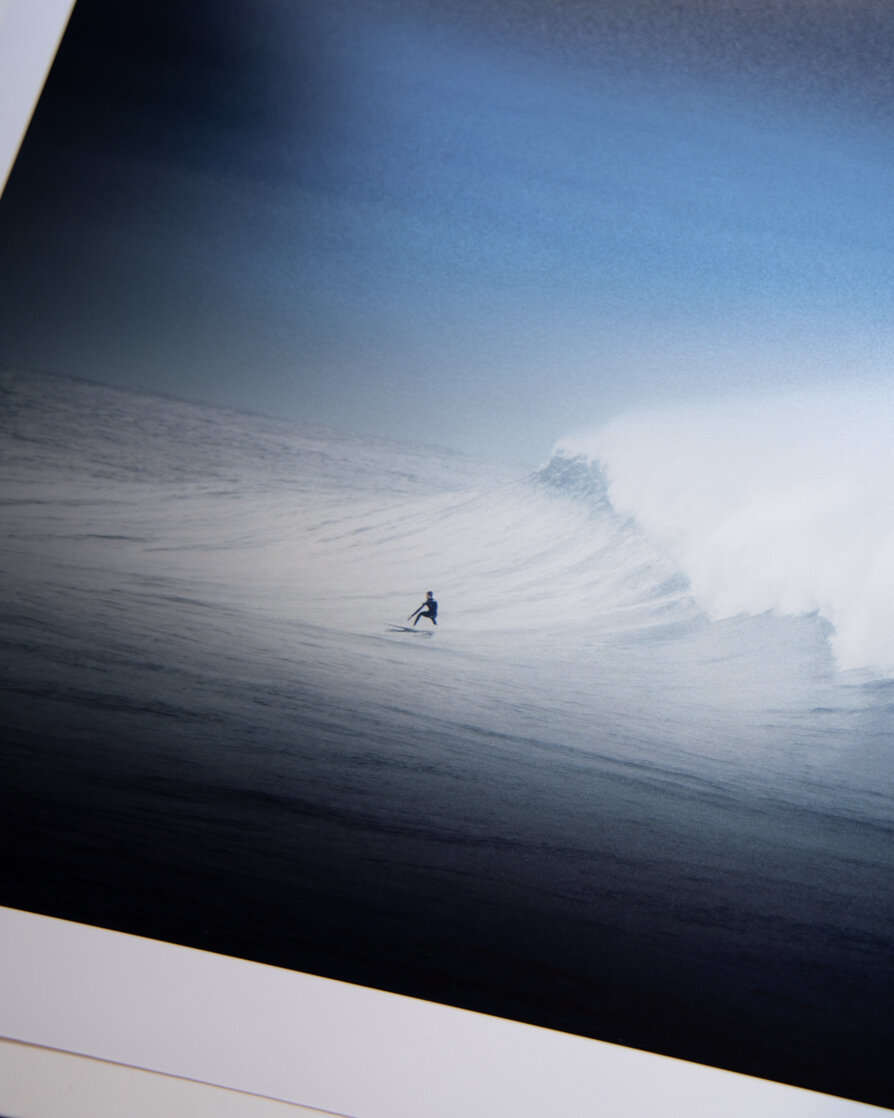The True Value of Photography — Part One
Next to marketing and promotion, pricing work is one of the harder things for an artist to do, and this is magnified for those new to the scene.
Next to marketing and promotion, pricing work is one of the harder things for an artist to do, and this is magnified for those new to the scene.
It seems that for every rational reason to give an artwork a specific monetary value, there’s an equally fair argument to lower the price from a business perspective. This is a sticky situation, because without sales there's no business. So what do you do in an attempt to make sales? You lower the price to be more competitive. The trouble is, this way of thinking is perpetual among a huge proportion of new artists (myself included, i’ve stumbled into this trap) and we collectively end up crashing the market value of the whole scene. To make things harder, there isn't a fixed formula for pricing your art. Unlike other consumer goods that have specific metrics to make comparisons with the competition, art is subjective to the buyer and the creation is unique from artist to artist.
All that being said though, there are a few considerations that shouldn't be overlooked when pricing your images.
Time is Money
Being an artist isn’t like having a ‘normal’ job. Artists don’t provide a service, they sell a product — a product that has no real physical function. A picture won't get you from point A to point B, you can't sit on it after a long day, and it doesn't play music or movies. Obviously for art lovers and collectors this is irrelevant, but for the average person on the street their fundamental reason to buy a piece of artwork is, quite simply, because they like the look of it.
Take this example into consideration, when you buy an item of clothing it's presumable you already know when you’ll wear it, what you’ll wear it with, and how often you’re likely to wear it. All of this goes into the purchase justification. I believe this is where undervaluing art stems from, because realistically once it gets put on display it becomes part of the furniture.
So how the heck are you supposed to justify your price?
Are you familiar with the saying 'it's not about the destination, it's about the journey'? Remind yourself of this every time you start to create a new piece because that is the foundation of your justification. Producing art takes time — and time, as we know, is our most valuable commodity because we can't make more of it. Once it's gone, it's gone. The whole construct of working is based on time, unless it's a specialist job you'll have an hourly rate. So in theory, the hours spent creating your art should all go into the pricing pot.
“But wait…if that’s the case then as the artist becomes more experienced, they'll also become more efficient with their time. So according to the theory they'd be making less, right?”
Well, no. This is where experience becomes your safety net — something you wouldn't have without time! Legend has it Picasso was sketching in a park when he was approached by a woman who insisted he draw her portrait. Picasso quickly produced a sketch and offered it to the woman for $5,000USD. She questioned his price, proclaiming it had only taken him seconds, to which Picasso replied ‘Madame, it took me my entire life.’
All of the hours, years even, spent studying your craft is value towards your artwork’s price. You may reach a point where you can produce quality work quickly or off the cuff, but you’re able to do this because of the time you’ve already invested into honing your skills.
The Art of Taking Away
In most other art forms you start with nothing and make something. Photography works in the opposite way. A photographer has everything in front of them, far more than they need actually. A completely three-dimensional plane of possibility. It is their job to be selective with the composition and remove everything that distracts from the focal point, therefore enhancing the story being told. This is the photographer’s artistic process, and I think it’s often forgotten about when the photo is taken. Consider it the same as a painter laying the base layers on a canvas, or a sculpture selecting the material they want to work with. These are key variables that have a direct impact on the aesthetics of the end result.
The process doesn’t end with a push of the shutter button either. I used to feel like I was cheating because you have this device that does everything for you, but the camera only captures what the technology allows it to capture. It doesn’t register light and colour the same way the human optics do, and it certainly doesn’t know what your artistic vision is for the photo. It is simply a tool. It’s up to the photographer to apply and enhance their vision in the final edit. Which, to tie into my last point, takes time.
Pushing the Boundaries
Finally there's the accessibility of photography, just another factor to undervaluing your work. If you own a phone, then you own a camera. Couple this with social media, and the amount of photos being taken around the world at any given time is always at its peak. Landmarks and points of interest in particular have been snapped and selfied hundreds, thousands, millions, maybe even billions of times. The clean cut, traditional angle doesn't cut it anymore. Now the photographer has to get creative because no one wants to buy a photo they could have taken, have already taken, or has been taken by every tourist that passes by.
The job of the photographer now requires them to take photos that are outside of a regular person's comfort zone — whether that’s being up while others sleep to get the best light and/or least crowds, trekking up mountains or deep into forests, enduring harsh weather conditions, or taking an extended amount of time to study a subject to capture the most interesting and unique angle. The originality of your image is something you should never overlook, especially if you have gone above and beyond in order to take it.
If you're an artist that struggles to price your work I hope these considerations help moving forward. Your talent is worth something, and at the very least so is your time. And if you're not an artist, I hope this given a better understanding and appreciation not just for photography’s value, but for all art’s value.
Stay tuned for part two where I'll look at some high value images and breakdown (using my best guesstimating skills) how or why the photographer landed at that price.
Limited Edition vs Open Edition — What's the Difference?
I think it’s safe assume that most people know what ‘limited edition’ means, and from that can work out what an open edition is. But beyond the finite production numbers, there are some other differences that make a limited edition piece so much more valuable.
I think it’s safe assume that most people know what ‘limited edition’ means, and from that can work out what an open edition is. But beyond the finite production numbers, there are some other differences that make a limited edition piece so much more valuable.
Example of a limited edition print
Example of a open edition print
Limited Edition
Print Process
My limited edition prints are known as a ‘Giclée’ (pronounced G–Clay). This is the name given to fine art production printing. It uses the print industries highest-grade printers and inks to re-produce artwork with stunning quality.
Paper Stock
The artwork is printed onto special fine art printing paper. This paper has a similar texture to watercolour paper, and helps to give the print more of an art-like finish, while the textured surface improves detail and depth. Giclée prints are available at A4 to A2 as standard.
The Finish
This is ultimately why giclée prints are superior to standard photo prints. The materials used to create a giclée produce bright, vibrant colours, and textures are beautifully reproduced. The printing process involves no coatings on either the paper or from the printer so the finished image has a completely matte surface. No glare means light won’t interrupt your viewing experience. I will also sign and number the front.
Longevity
Giclée printing meets the standards for museum-grade archival quality. If looked after correctly the art work has a predicted lifespan of 100 years without fading, and likely many more years beyond that before noticeable deterioration sets in. Art is an investment. It’s what makes it so valuable. It’s designed to last a long time so people can enjoy it for generations, even centuries in some cases. That is why I like to produce my limited edition prints in this way.
Open Edition
Don’t let the giclée print process lure you into thinking the open edition prints aren’t wall-worthy quality. Far from that. I wouldn’t allow a print to go out without having checked the quality first, and i’m very impressed with my supplier for the open editions.
Open editions are an affordable way to purchase art for people aren’t ready to buy an investment piece.
Print Process
These prints are produced using industry-grade commercial printers and inks.
Paper Stock
I use Lustre paper for my open edition prints. This is a high quality photographic paper with a textured coating that produces soft sheen. Due to the print method being more affordable the sizes of the open editions range from A3 to A0 as standard but they can go bigger on request.
The Finish
Lustre photographic paper’s coating creates a more contrasting colour reproduction of the printed image. It’s not uncommon for colours to appear slightly darker than their limited edition counterparts. — it’s not a huge difference but it’s something to keep in mind. I believe this wont be an issue if displayed in a well lit room. Although not as harsh as glossy paper, lustre still exhibits some sheen when light reflects off it at certain angles. I will also sign the back of all open edition prints.
Longevity
The predicted lifespan of an open edition print is around 40 years, which is still very good considering the affordability. If it’s kept in a frame and out of direct sunlight or hard lighting it will likely last longer.
All of the prints on my store are available as limited and open edition. I want to position my artwork at the value I believe it is worth considering what went into getting that photo, however I want to also make it accessible to the everyday buyer. It’s amazing how much a piece of art can compliment or completely transform a room — not convinced? Why not find out for yourself…





